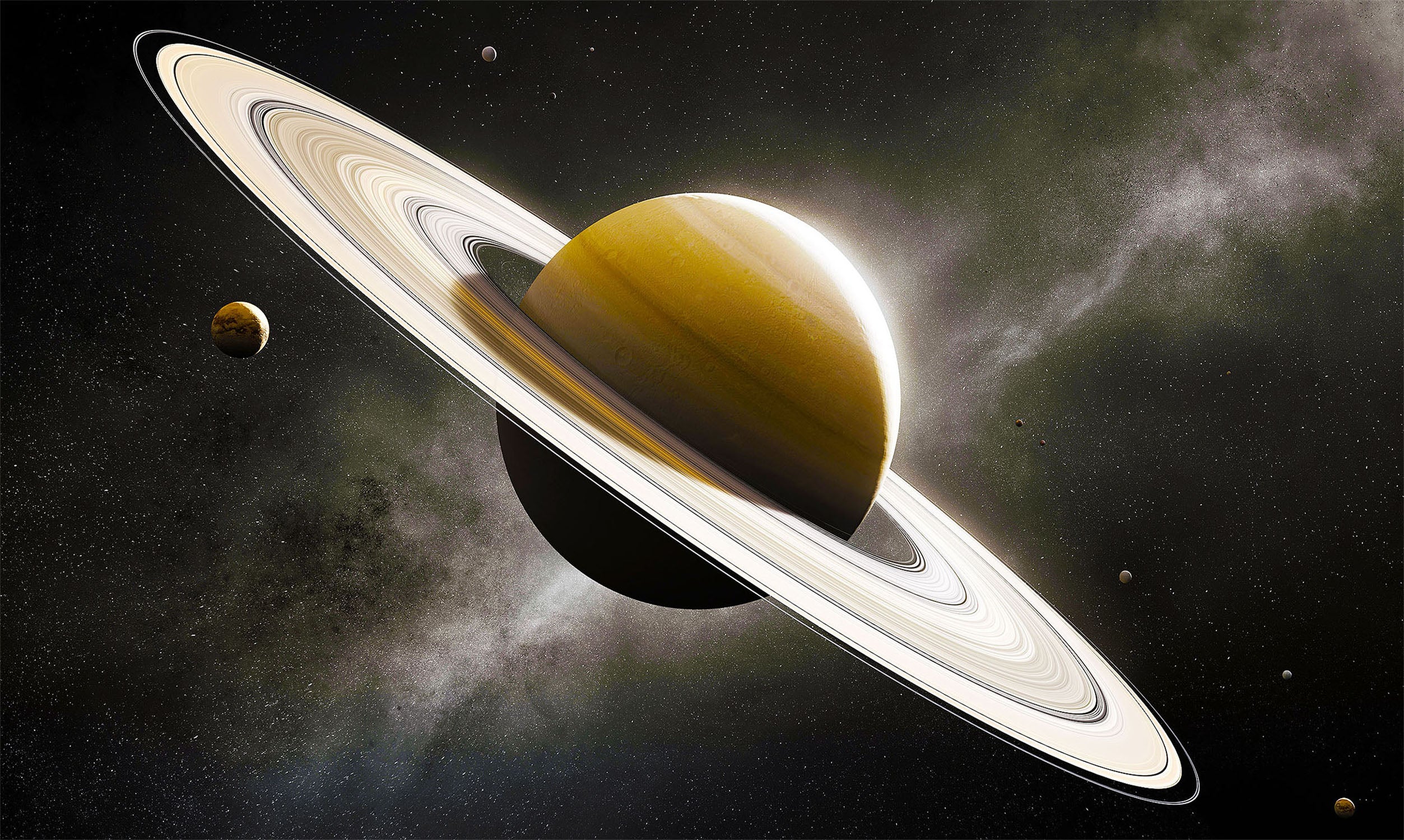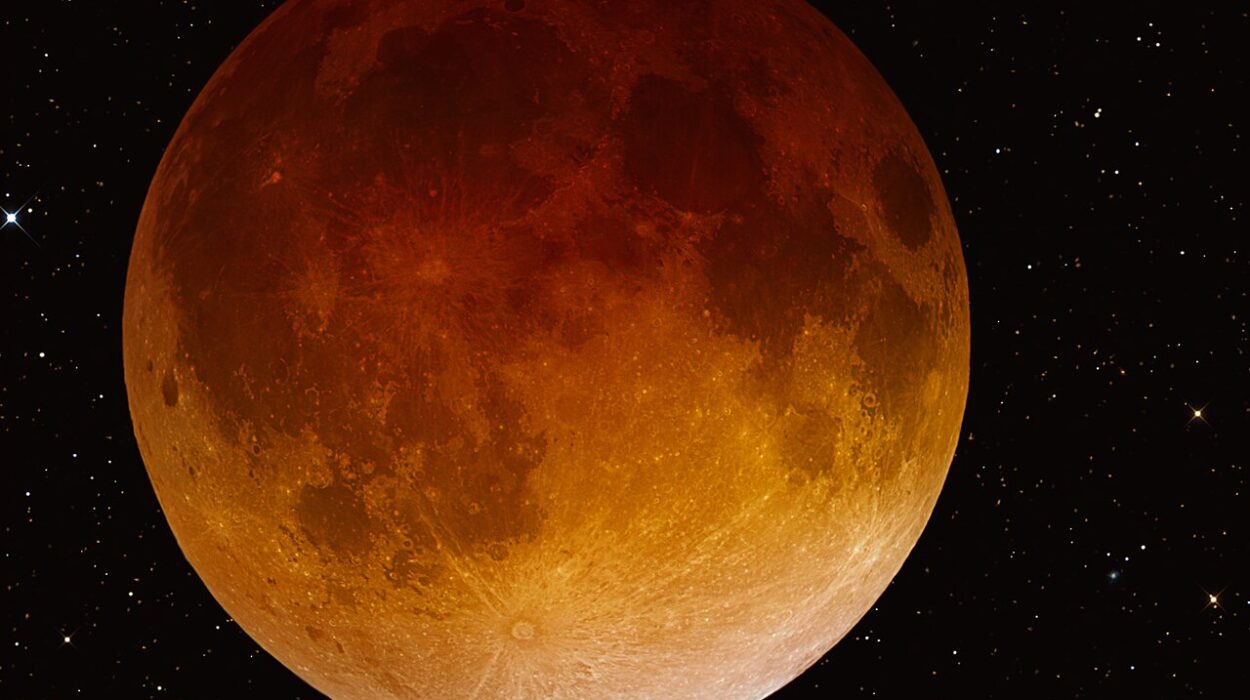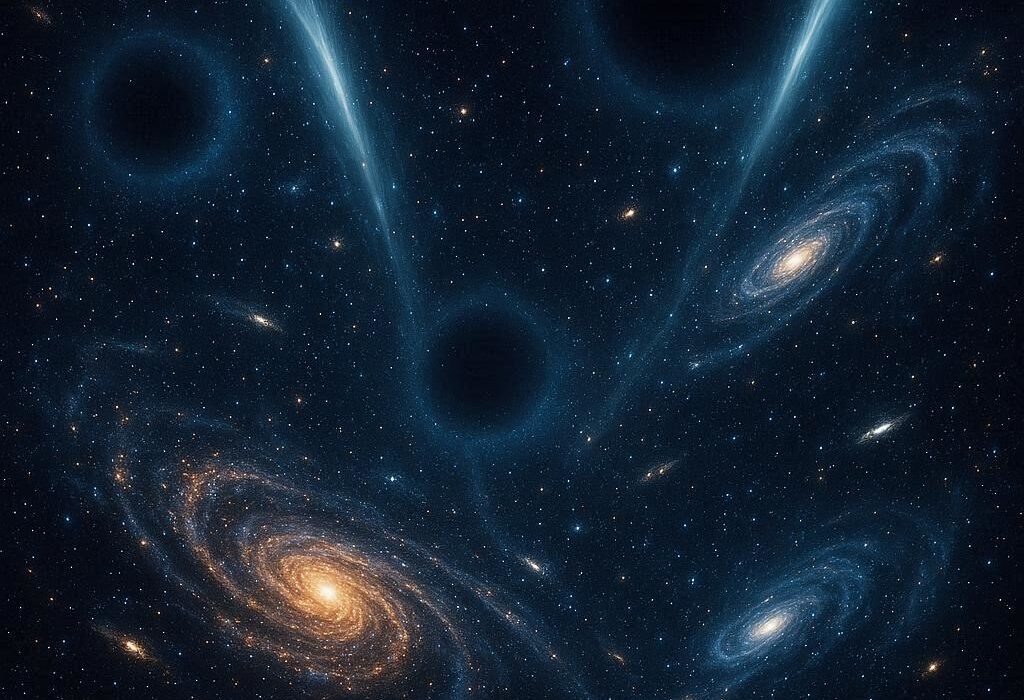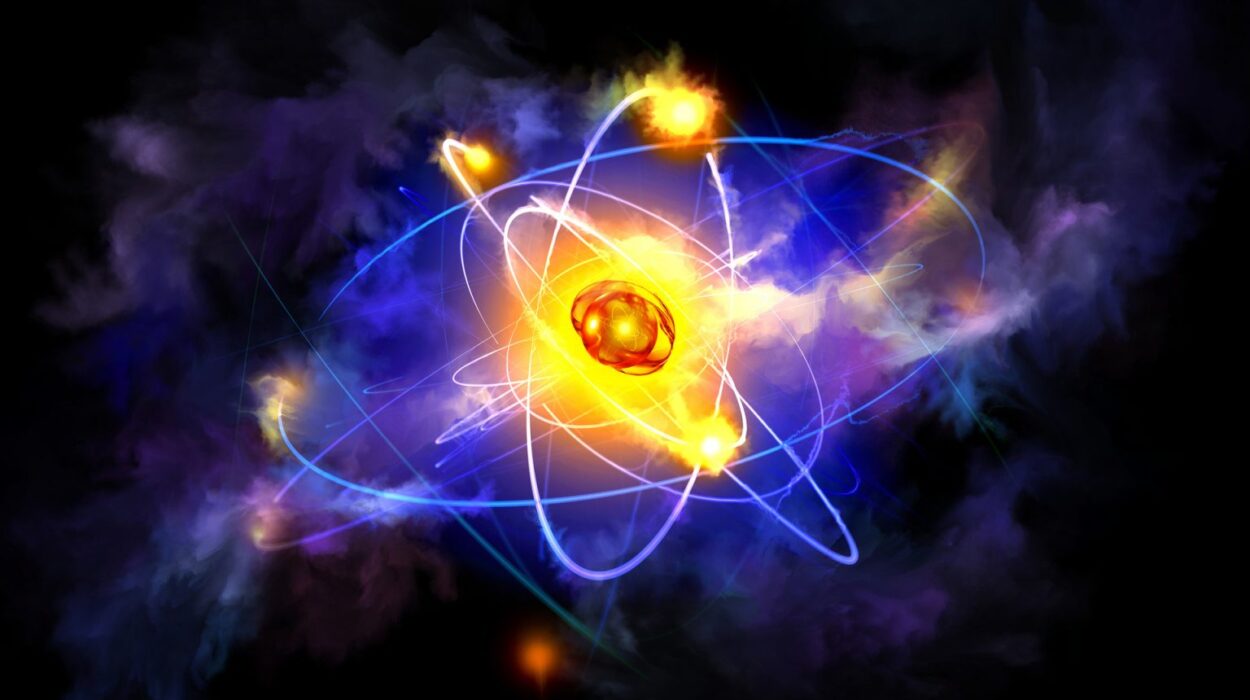Among all the celestial spectacles in the solar system, none captivate human imagination as profoundly as the rings of Saturn. They are at once timeless and ephemeral, majestic yet fragile, and so vast that they could stretch nearly the distance between the Earth and Moon if uncoiled into a single ribbon. Saturn’s rings are not solid bands but intricate systems of countless particles—ice, dust, and rock—that orbit the gas giant in a delicate gravitational dance. Beyond their stunning beauty lies a story of physics, chemistry, and cosmic evolution. The rings of Saturn are not static ornaments; they breathe, shift, and change with the planet’s seasons, influenced by sunlight, shadow, gravity, and time itself. Understanding the dynamics and seasons of Saturn’s rings reveals not only the nature of this magnificent world but also the universal processes that shape planetary systems.
Saturn and Its Place in the Solar System
Saturn, the sixth planet from the Sun, is the second-largest planet in our solar system after Jupiter. It orbits the Sun at an average distance of about 1.4 billion kilometers, taking approximately 29.5 Earth years to complete one revolution. Because of this long orbital period, each of Saturn’s seasons lasts roughly seven Earth years. Its axial tilt of 26.7 degrees—similar to Earth’s 23.5 degrees—creates distinct seasonal variations. However, on Saturn, these changes are slower, grander, and visible even in its rings.
The rings themselves extend tens of thousands of kilometers outward from the planet’s equator but are astonishingly thin—sometimes only tens of meters thick. They are divided into several primary sections designated alphabetically in the order of their discovery: the D, C, B, A, F, G, and E rings. The B and A rings are the most prominent, separated by the famous Cassini Division, a gap sculpted by gravitational interactions with Saturn’s moons. Despite their vast size, the rings collectively contain a surprisingly small mass—estimated to be equivalent to that of a medium-sized moon.
These shimmering bands are a dynamic, evolving structure shaped by countless physical forces. The interplay of sunlight, shadow, magnetism, and gravity from both Saturn and its moons creates an environment of perpetual motion. The study of their dynamics and seasonal transformations offers insights into orbital mechanics, the behavior of icy particles in space, and even the origins of planetary systems.
The Composition and Structure of the Rings
At first glance, Saturn’s rings appear as continuous sheets of matter, but close inspection reveals an astonishingly complex structure composed of billions of individual particles. These particles range from microscopic grains of dust to boulders several meters in diameter, composed primarily of water ice with traces of silicate rock and organic compounds. Their high reflectivity, which gives the rings their brilliance, arises from this icy composition.
Spectroscopic observations from spacecraft such as Voyager and Cassini have confirmed the dominance of crystalline water ice, which scatters sunlight efficiently. Yet not all parts of the ring system are identical. Some regions display subtle color variations, hinting at differences in composition or particle size. The B Ring, for instance, appears denser and more opaque, while the C Ring is thinner and slightly darker, possibly due to contamination by meteoritic dust or space weathering.
The dynamics of these particles are governed by Keplerian motion—each particle orbits Saturn independently, following the same laws that govern planetary motion around the Sun. Particles closer to the planet complete their orbits more rapidly, while those farther away move more slowly. Collisions between particles are frequent but typically gentle due to the low relative velocities. These interactions act as a self-regulating mechanism, maintaining the rings’ flatness and preventing particles from escaping into chaotic orbits.
Embedded within this system are gravitational resonances created by Saturn’s numerous moons. When a moon’s orbital period forms a simple ratio with that of particles in a specific region of the rings, it exerts periodic gravitational tugs that can clear gaps, create waves, or cluster material into narrow bands. These resonances explain the intricate structure of features such as the Cassini Division and the sharp edges of the A and F rings.
The Origin of Saturn’s Rings
The question of where Saturn’s rings came from has puzzled scientists for centuries. Early astronomers like Galileo and Huygens could see only their outlines through primitive telescopes, and for a long time, their nature remained mysterious. Modern research offers two primary hypotheses: that the rings are remnants of a destroyed moon or that they are leftover material from Saturn’s formation.
In the first scenario, a moon or icy body may have ventured too close to Saturn, crossing its Roche limit—the distance within which tidal forces overcome the object’s self-gravity. The moon would have been torn apart, its fragments spreading into orbit to form the rings we see today. Alternatively, the rings could be primordial, consisting of material that never coalesced into a moon because of Saturn’s strong gravitational field.
Data from the Cassini spacecraft, which orbited Saturn from 2004 to 2017, provided valuable evidence suggesting that the rings may be relatively young, possibly less than 100 million years old. Their brightness implies they have not been heavily darkened by space dust, which accumulates over time. This youthfulness supports the idea of a catastrophic event—perhaps the breakup of a moon or comet—that created the rings long after Saturn itself formed.
Yet, some argue that the apparent youth could be deceptive. Processes like micrometeoroid bombardment and electrostatic cleansing could refresh the icy surfaces of ring particles, maintaining their brightness. Thus, the true age of Saturn’s rings remains one of planetary science’s most intriguing mysteries.
The Seasonal Geometry of Saturn’s Rings
Saturn’s rings are not merely static; they change dramatically with the planet’s seasons. Because of Saturn’s axial tilt, the Sun’s illumination on the rings varies over its 29.5-year orbit, altering their appearance from Earth and affecting their physical behavior.
When Saturn approaches an equinox, the rings appear edge-on to the Sun and Earth. At this orientation, the sunlight strikes the rings at a very shallow angle, causing them to almost disappear from view in telescopes. These equinox periods occur twice during each Saturnian year, approximately every 15 Earth years. During these moments, the reduced sunlight allows scientists to study the vertical structure of the rings and to detect faint features normally hidden by the planet’s glare.
In contrast, during solstice, one hemisphere of Saturn and its rings is fully illuminated while the other lies in shadow. The contrast between sunlight and shadow produces dramatic visual and physical effects. The Sun’s warmth affects the temperature and possibly the electrostatic charge of the icy particles, influencing how they interact. Seasonal variations also alter the distribution of charged dust and plasma around Saturn, subtly changing the dynamics of the rings.
The ring shadows cast onto Saturn’s atmosphere shift with the seasons, revealing the intricate relationship between the planet and its rings. During northern summer, the shadow falls across the southern hemisphere, and during southern summer, it moves northward. These sweeping shadows have been observed by the Cassini spacecraft, creating patterns that move slowly across Saturn’s cloud tops over years.
Light, Shadow, and the Changing Appearance of the Rings
The rings’ appearance is profoundly affected by the interplay of light and shadow throughout Saturn’s orbit. Because the rings are so thin, even slight changes in the Sun’s position can alter how light scatters and reflects. This scattering depends on the angle between the Sun, the observer, and the ring plane—a relationship known as the phase angle.
When viewed at low phase angles, the rings appear brighter due to a phenomenon called the “opposition surge.” This effect occurs when sunlight reflects directly back toward the observer from the icy surfaces of ring particles, minimizing shadows and producing a temporary brightening. At higher phase angles, more shadows are visible, and the rings appear dimmer and more textured.
During equinox, sunlight grazes the ring plane, casting long, thin shadows of ring particles onto one another. Cassini’s cameras captured haunting images of these shadows, revealing vertical structures rising several kilometers above the main ring plane—evidence of clumping and wave-like distortions caused by gravitational perturbations. These fleeting shadows allow scientists to measure the thickness and density variations across the rings with extraordinary precision.
The color of the rings also varies subtly with lighting conditions. While they generally appear white or slightly yellowish, close observation reveals faint reddish or brownish hues in some regions, possibly due to contamination by organic material or micrometeoroids. The B Ring tends to appear more neutral, while the A Ring shows slightly warmer tones. These differences can shift with the angle of sunlight, giving Saturn’s rings an almost living quality, as if they respond to the cosmic seasons.
Ring Dynamics: The Dance of Gravity and Motion
The motion within Saturn’s rings is a ballet orchestrated by gravity. Every particle follows an elliptical orbit dictated by Kepler’s laws, yet no particle moves in isolation. Each feels the gravitational pull of Saturn, its moons, and nearby ring particles. This network of forces produces waves, gaps, and spirals that ripple across the rings like sound waves through air.
One of the most striking examples of this interaction is the effect of orbital resonances with Saturn’s moons. For instance, the Cassini Division between the A and B Rings corresponds to a 2:1 resonance with the moon Mimas—meaning that for every orbit a particle makes in that region, Mimas completes exactly half an orbit. The repeated gravitational tug from Mimas gradually clears particles from this region, creating the visible gap.
Other moons, known as shepherd moons, maintain the sharp edges of certain rings. The narrow F Ring, for example, is bounded and sculpted by the moons Prometheus and Pandora, which orbit just inside and outside the ring respectively. Their gravitational influence confines the ring’s particles, creating braids and clumps that shift constantly.
Internal resonances within the rings themselves can also generate spiral density and bending waves—patterns that propagate through the ring material as gravitational oscillations. These waves reveal information about Saturn’s internal structure, since their properties depend on the planet’s gravitational field. Thus, by studying the rings’ dynamics, scientists indirectly probe Saturn’s interior, making them a natural seismograph for the gas giant.
Collisions, Aggregation, and Fragmentation
While the graceful motion of ring particles appears smooth from a distance, on a microscopic level, it is a world of constant collisions. Particles continually bump, slide, and ricochet off each other. These collisions, though mostly gentle, have profound effects on the overall behavior of the rings.
When two particles collide, their outcomes depend on their relative speeds, sizes, and surface properties. Slow collisions can lead to sticking or temporary aggregation, forming larger clumps that drift together briefly before breaking apart. High-speed impacts, on the other hand, fragment particles, creating fine dust that contributes to the rings’ diffuse glow.
These processes exist in a delicate balance. Aggregation tends to make particles grow, while fragmentation limits their size. Over time, the rings maintain a steady-state particle distribution that reflects this equilibrium. Cassini’s close-up observations revealed that particles often form transient clusters, sometimes hundreds of meters across, held together by weak gravity and cohesive forces.
Electrostatic charging also plays a role. Ultraviolet radiation from the Sun and plasma from Saturn’s magnetosphere can charge the surfaces of icy particles, causing them to repel or attract each other. This electrostatic interaction becomes particularly significant during equinox, when sunlight strikes the rings edge-on, enhancing charging effects and potentially altering particle motion.
The Influence of Saturn’s Magnetosphere
Saturn’s magnetic field and its surrounding plasma environment exert additional forces on the rings. The planet’s rapid rotation and strong magnetic field generate a magnetosphere filled with charged particles. As these particles interact with the ring system, they can modify the motion and composition of small dust grains.
Charged ring particles can become trapped by magnetic fields, leading to the formation of features known as spokes—radial markings that appear and disappear across the rings. First observed by the Voyager spacecraft, these spokes are thought to arise from dust particles lifted above the ring plane by electrostatic forces, temporarily aligning along magnetic field lines. Cassini observed that spokes tend to appear more frequently near equinox, when solar illumination conditions favor strong charging.
The magnetospheric plasma also influences the chemistry of the rings. Bombardment by energetic particles can alter the molecular structure of ice, produce complex hydrocarbons, and even sputter material away from the ring surfaces. This slow but constant process contributes to the aging and evolution of the rings, gradually changing their color and composition.
The Hidden Connection Between Rings and Moons
Saturn’s rings and moons are deeply interconnected, forming a single gravitational ecosystem. The moons not only sculpt the rings through resonances but also exchange material with them. Micrometeoroid impacts on small moons can eject dust that drifts into the rings, while ring particles can spiral inward or outward under the influence of Saturn’s gravity and radiation pressure, potentially accreting onto moon surfaces.
Some of Saturn’s moons may even have originated from the rings themselves. Simulations suggest that the outer edges of the ring system could have produced small icy moons through gradual accretion of material. Conversely, moons that venture too close to Saturn risk disintegration, feeding the rings anew. This dynamic cycle blurs the boundary between moon and ring, emphasizing the continuity of the Saturnian system.
One of the most remarkable examples of moon-ring interaction is Enceladus, the icy moon that powers the diffuse E Ring. Enceladus’ geysers eject water vapor and ice particles from its subsurface ocean into space, replenishing the E Ring continuously. This active exchange demonstrates that Saturn’s rings are not inert relics but living components of an evolving planetary environment.
Seasonal Temperature and Chemical Variations
The thermal behavior of the rings changes with Saturn’s seasons. As the Sun’s angle shifts, the temperature of ring particles fluctuates between about 60 and 110 Kelvin. During solstice, when one hemisphere receives prolonged sunlight, that side of the ring system becomes warmer, while the opposite side cools in shadow.
These temperature changes influence the physical and chemical properties of the ring particles. Ice can sublimate at higher temperatures, releasing vapor that may migrate and refreeze elsewhere, subtly altering the rings’ texture over time. The surface roughness and porosity of ice grains also affect how they reflect light, creating seasonal color variations.
Spectral data from Cassini’s Visual and Infrared Mapping Spectrometer revealed that certain chemical features, such as the presence of ammonia or organic molecules, change in strength with the seasons. These variations suggest that solar radiation drives a complex cycle of photochemistry on ring particle surfaces, similar in principle to weathering processes on airless moons.
The Long-Term Evolution of Saturn’s Rings
The fate of Saturn’s rings is a topic of active research and debate. While they appear timeless to human observers, evidence suggests they are transient structures on cosmic timescales. Observations from Cassini indicate that material from the rings is gradually falling into Saturn’s atmosphere in what scientists call “ring rain.”
This process occurs as charged particles from Saturn’s magnetosphere interact with the rings, pulling tiny ice grains inward along magnetic field lines. These particles eventually vaporize in the upper atmosphere, enriching it with water and other compounds. Estimates suggest that the rings could lose significant mass within 100 million years, meaning they might eventually disappear altogether.
However, new material may replenish the rings over time through collisions of comets or disintegration of small moons, maintaining their visibility for billions of years in cycles of renewal and decay. The rings, therefore, represent a dynamic balance between creation and destruction—a cosmic equilibrium that reflects the broader evolution of planetary systems.
Observing Saturn’s Rings from Earth and Space
From Earth, Saturn’s rings have fascinated astronomers for centuries, yet it was the advent of spacecraft exploration that transformed our understanding. The Pioneer 11, Voyager 1 and 2, and especially the Cassini mission provided unprecedented views of their structure and dynamics.
Cassini’s long-term observations allowed scientists to watch the rings through changing seasons, capturing the subtle shifts in color, brightness, and shadow. The mission’s final phase, known as the “Grand Finale,” sent the spacecraft diving between Saturn and its rings, directly sampling their composition and measuring their mass. The data revealed a delicate, evolving system that continues to reshape itself under the influence of gravity, light, and time.
Today, observations from Earth-based telescopes, including the Hubble Space Telescope and large ground observatories, continue to monitor seasonal changes in the rings. Each equinox and solstice provides new opportunities to study their shifting geometry, helping scientists refine models of ring dynamics and aging.
Philosophical and Scientific Significance
The rings of Saturn embody both beauty and impermanence. They remind us that celestial objects are not static; they live, evolve, and fade. In studying their seasons and dynamics, humanity gains more than knowledge of a distant world—it gains perspective on the nature of change itself.
On a scientific level, Saturn’s rings serve as a natural laboratory for understanding disk systems across the universe. The same physical principles that shape these icy rings govern the formation of protoplanetary disks, the accretion of moons, and even the spiraling structures around young stars. Saturn, therefore, offers a scaled-down model of cosmic processes that occur on galactic scales.
Conclusion
The seasons and dynamics of Saturn’s rings represent a story of balance—between light and shadow, creation and decay, order and chaos. They respond to the slow turning of Saturn’s year, glowing and fading in rhythm with the Sun’s distant warmth. Their motion reveals the invisible threads of gravity that bind the solar system together, while their chemistry records the subtle touch of radiation and time.
Though they may one day vanish, Saturn’s rings continue to teach us about the forces that shape the cosmos. They remind us that beauty in the universe often arises from impermanence, and that even the grandest structures are subject to the quiet rhythms of change. In their shimmering bands lies a record of cosmic history—an eternal dance of ice and light, echoing through the ages, under the distant Sun that gives them life.






